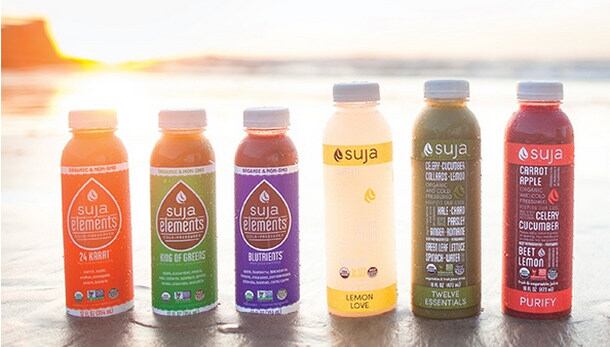FoodNavigator-USA was speaking to co-founder and CEO Jeff Church after Forbes ranked Suja Juice the second most promising company in America (behind Instacart) in 2015 (the only other food & beverage brand in the top 20 was Bai Brands at #13).
He said: “All the growth in the premium juice category is coming from HPP, cold-pressed juices now, so I think you’ll see more people jumping into the category, and I do see some of these new players becoming national brands. But I don’t see there being 10 new ones, more like two or three. You need to be really well-funded.
"We've invested nearly $50m into Suja in two and half years [and secured $30m from high profile investors including gluten-free giant Boulder Brands and private equity firm Alliance Consumer Growth] because we do everything in-house [from pressing the fruits and vegetables, to bottling the juice, to high-pressure processing]."
Our philosophy has been to democratize HPP juice
Much has been made about the hefty $8.99 price tag originally attached to Suja products, which are made by cold-pressing fresh organic fruits and vegetables, bottling the juice, and then pasteurizing it via HPP, which involves putting the bottles into a high-pressure chamber that is flooded with cold water and pressurized (thus the ‘cold-pressured’ moniker).
However, a new three-tiered pricing architecture developed over the past 18 months has changed perceptions that cold pressured juice is just for wealthy hipsters, he said, with Suja Classic 16oz bottles now retailing at $7.99; Suja Elements, a 12oz line exclusive to Whole Foods that launched in late 2013 retailing at $4.99; and the Suja Essentials 12oz line - launched in July 2014 - retailing at $3.99.
“Our philosophy has been to democratize HPP juice because $8.99 is not really affordable for everyone," said Church. "With Essentials we wanted to hit an aggressive price point - we were thinking a bit like Amazon, if you build it they will come - and then as we grow we absorb that overhead and create that profitability.”

A $3.99 price point opens up a much broader market
He added: “A $3.99 price point opens up a much broader market and allows us to achieve our mission of getting a cold pressed juice in the hands of every consumer.
“Brands like Odwalla and Bolthouse Farms are still about a dollar less [than Suja Essentials], but we are organic, and cold-pressured, and consumers are trading up. It’s growing really, really fast, we have it in Target, Publix, Kroger, Safeway, Costco, and the natural foods channel.”
He added: “I’d say when we are in mainstream grocery, roughly about 20% of the stores, the higher indexing stores, will tend to take Suja Classic and the rest will focus on Essentials, which is a little more smoothie based, but has a wide range of flavors from sweet to non-sweet.”

Retailers have waived things like slotting fees that are normal if you are in a more commoditized area
The biggest challenge right now is managing explosive growth, and delivering for retailers, who in many cases were so keen to get a slice of the cold pressed juice action that they didn’t want to wait until their annual category resets to start clearing shelf space for it, he said.
“When we launched Elements into Whole Foods in 2013 we gave them a one-year exclusive, but a lot of other retailers were coming to us, and they took in Essentials - which is a different product - outside of their normal planogram reset [timetables]. They have also waived things like slotting fees that are normal if you are in a more commoditized area.”
But don’t shoppers want local products? And could Suja lose its funky image once it starts getting bigger and consumers see it in every grab & go chiller cabinet?
Some smaller chains want ‘local’ brands, he said. But the big chains like dealing with someone that can work with them on a national scale and deliver a consistent product, and Suja is well-equipped to do this thanks to the investment in its supply chain and manufacturing footprint.

We’ve talked about shots and bars and popsicles but we are trying to stay as focused as we can right now on juice
Moving forward, Suja has the capacity to grow significantly from its facilities in San Diego, but is considering a facility further east, he said.

“It’s probably going to be 2016, but the challenge is that a lot of the really great organic produce comes from southern and central California, and do we want to start shipping truckloads of organic produce across half the country? That’s not very efficient. Having your manufacturing in multiple location also adds risk to the equation, so it's a big decision.”
So could the Suja brand extend beyond juice?
Possibly, but bosses don’t want to get distracted right now, he said: “We’ve looked at what we can do with the material that’s left after we press the fruits and we’ve talked about shots and bars and popsicles, but we are trying to stay as focused as we can right now.”
